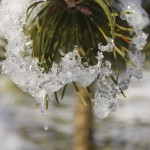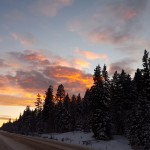Originally published as a column in the Armchair Mayor News on Friday, November 28, 2016.
The last two weeks have been tragic in many ways. If you’ve read the news and are perhaps waiting for something positive on the diesel spill near Bella Bella, you most likely know about the unacceptable low-class response that came from the government.
Yes, the Department of Fisheries and Oceans PR team build a nice little positive update stating that the tug boat that leaked diesel into the water has been pumped clean and the attention is now focused on removing the Nathan E. Stewart barge from the waters near Bella Bella. Right. And then?
Then not much. Our premier said that what we have learned from this spill is that the federal government needs to provide better spill response for any future unfortunate incidents. As for the environmental impact of the spill, including the local economy and way of life… chances are you won’t hear much from either the provincial or the federal government.
The latter is likely pondering over the slew of lawsuits that come with the latest governmental insistence that the LNG terminal near Prince Rupert must continue. It will be a big mess, if we are looking at the Muskrat Falls protests that just about wrapped up this last Wednesday though many scientific arguments were brought against the LNG plant, nothing influenced the federal mind towards rethinking the project.
If it sounds topsy-turvy, it’s only because it is. Who is then to stand up for what’s right environmentally speaking? Ideally us, the people who live here and raise our children here hoping that the world we leave to them will be a liveable one. The question is: are we? Are we united in adopting the one goal that can see us alter the course just enough to ensure survival? Hard to tell at times.
A couple of weeks ago my family and I drove through Cache Creek and witnessed a road check by conservation officers. They were searching for poached animals. A few days later I heard on the radio that over 70 wildlife act violation tickets were handed out and some warnings as well. That was of course, in a small community in the interior. Care to guess what the province-wide poaching stats look like? Your guess is as good as any and no one can tell real numbers since there are far too few conservation officers in the field and the paper work that is done by those tied to their desks does not include poaching numbers.
I’m ready to say if you describe these scenarios to anyone without mentioning this is happening in Canada, they’d never guess it was here. After all, we should have world-class spill response units and technology in place, we should have objective and careful documenting of environmental consequences following a spill, we should by now have a ban in place that will protect the West Coast and preserve its pristineness and yes, we should have enough conservation law enforcement officers and tough enough laws that will deter most of the marauders from poaching. People should not be expected to fend for themselves like the Heiltsuk Nation people are doing now and there should be news of the spill all over so people can stay informed, talk about it and help. No environmental crisis should be ignored, no desperate outcry muffled by pollical positivity that can almost (and cruelly so) pass for facetiousness.
Our planet overall is not doing too well either. Climate change is still debated in some circles (beats me) but there are signs that cannot be ignored and science-based facts that stare us in the face. Among them, a recently published report that predicts the disappearance of two thirds of all the wildlife should we not adopt some quick and drastic changes to how we live as citizens of a planet suddenly too small too crowded and seriously taken for granted. It’s enough to make one tear up and ask how this is possible.
Pollution, unrestricted logging, and large scale farming add to the changes brought upon by a now finicky climate, and the ultimate consequences have to do with our existence on this planet. Human life is intricately and intimately connected with that pf other forms of life, from bacteria to large mammals and from invisible plankton to old-growth trees. Seeing the connection becomes a game changer. Educating ourselves and acting out of respect for life in general is not an invitation anymore, it’s an act of civil duty worthy of everyone who care about being alive.
The said crossroad cannot be ignored. It’s a simple question: What’s it going to be? If we are to prevail, something must change. Any less reminds me of a song by an Irish group called Flogging Molly: ’’Cause we find ourselves in the same old mess/Singing drunken lullabies…’ Late as it may be, there is still time to change the tune.

 The sky was painted in yellow light and beautiful white and blue clouds as the sun was setting in Kamloops. No sign of new snow, just the old hardened dirty banks by the sides of the road, some already transformed into dirty rivulets by the day’s warm air.
The sky was painted in yellow light and beautiful white and blue clouds as the sun was setting in Kamloops. No sign of new snow, just the old hardened dirty banks by the sides of the road, some already transformed into dirty rivulets by the day’s warm air.








